Seok Yeong-hwan left a comfortable medical career in North Korea for the South. As a groundbreaker in practicing traditional Korean medicine handed down on both sides of the peninsula, he generously helps those who cannot afford treatments.
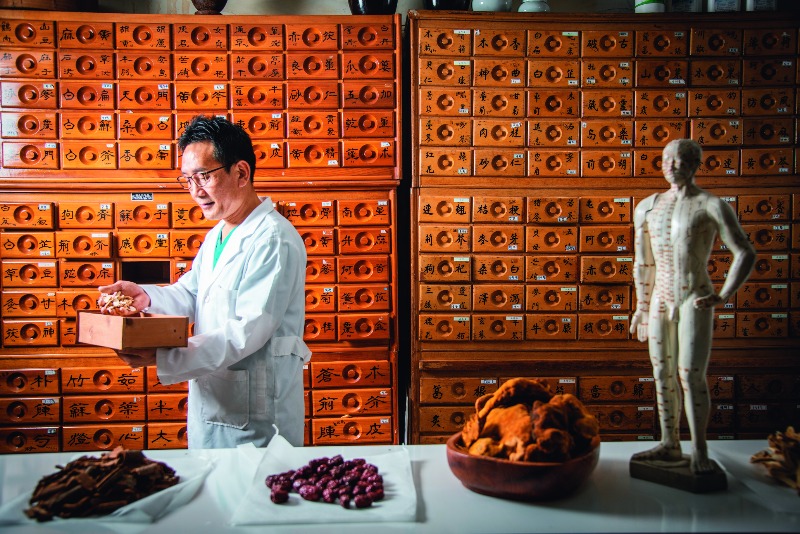
To patients accustomed to acupuncture needles as thin as a strand of hair, the needles at Yeongdeungpo 100 Years Clinic can be intimidating. But patients from North Korea feel differently.
Seok Yeong-hwan, 55, runs the clinic. Stacks of North Korean books on medicine, including “Koryo Medicine,” hint at his uniqueness. He is the first North Korean-born doctor licensed to practice traditional Korean medicine in South Korea
Abandoning a promising career as an army medical officer, Seok fled to the South with his girlfriend, now his wife, in October 1998. Taking advantage of his military rank to elude checkpoints and hitch rides, they traveled from Pyongyang to Seoul – across the DMZ, instead of via a third country as most refugees do – in only three days.
The dream behind his 100 Years Clinic is to help patients have one hundred years of a happy, healthy life. North Korean transplants call the infirmary a “clinic for refugees.” They can receive treatment and even get life advice there without any fear of burdensome bills. Since opening in 2002, Seok has not accepted a single won from financially strapped patients
Clinic for Refugees
“Some refugees complain that they have difficulty making themselves understood by medical professionals at many other hospitals or clinics. Refugees say they can bare their hearts to me and thus feel at home, to some extent,” Seok said. “Anyway, I arrived in Seoul before they did and I had the same experience. It’s hard for me to ignore their predicament as I understand them better than anybody else.”
The clinic also receives many KoreanChinese patients, who agree that medicines and treatments prescribed and administered by Seok are effective because their diet and lifestyle are similar to those of North Koreans.
Even senior South Korean government officials were frequent visitors at Seok’s first location, near Gwanghwamun, the downtown section of Seoul. Skyrocketing rent forced him to close Gwanghwamun 100 Years Clinic in 2017, after 15 years in operation. His site in Yeongdeungpo District, located in southwestern Seoul, spans 661 square meters (double the size of his first clinic) at a lower price.
Seok hails from Kapsan, a mountainous county in Ryanggang Province, North Korea. His family connections gave him a comfortable life. But after regime founder Kim Il-sung died in 1994, Seok began to feel disillusioned as he witnessed malnourished soldiers and heard other doctors recall their overseas experiences. He eventually yielded to these doubts and misgivings.
When he fled the North, Seok was an army captain and surgeon serving as chief of emergency medical services at the North Korean People’s Army’s “Hospital 88.” Before that, he worked at the Research Center of Basic Medical Sciences in Pyongyang, also known as a “longevity research center.” It was one of the perks of being the son of a senior officer in the Supreme Guard Command, the equivalent of the Presidential Security Service in South Korea. Seok and his wife have since lost contact with their parents. Now, they have one son who is studying computer engineering at college, another son in high school and a daughter in middle school.
Seok doesn’t know the whereabouts of his three brothers, either. “My relatives have vanished without a trace. People are saying that they’ve evaporated, literally,” he said.
When Seok arrived in the South, there were no established standards for North Korean refugees to become medical doctors. The Ministry of Education and the Ministry of Health and Welfare permitted him to sit for the licensing exam for traditional medicine based on the advice of the Society of Korean Medicine and other experts.
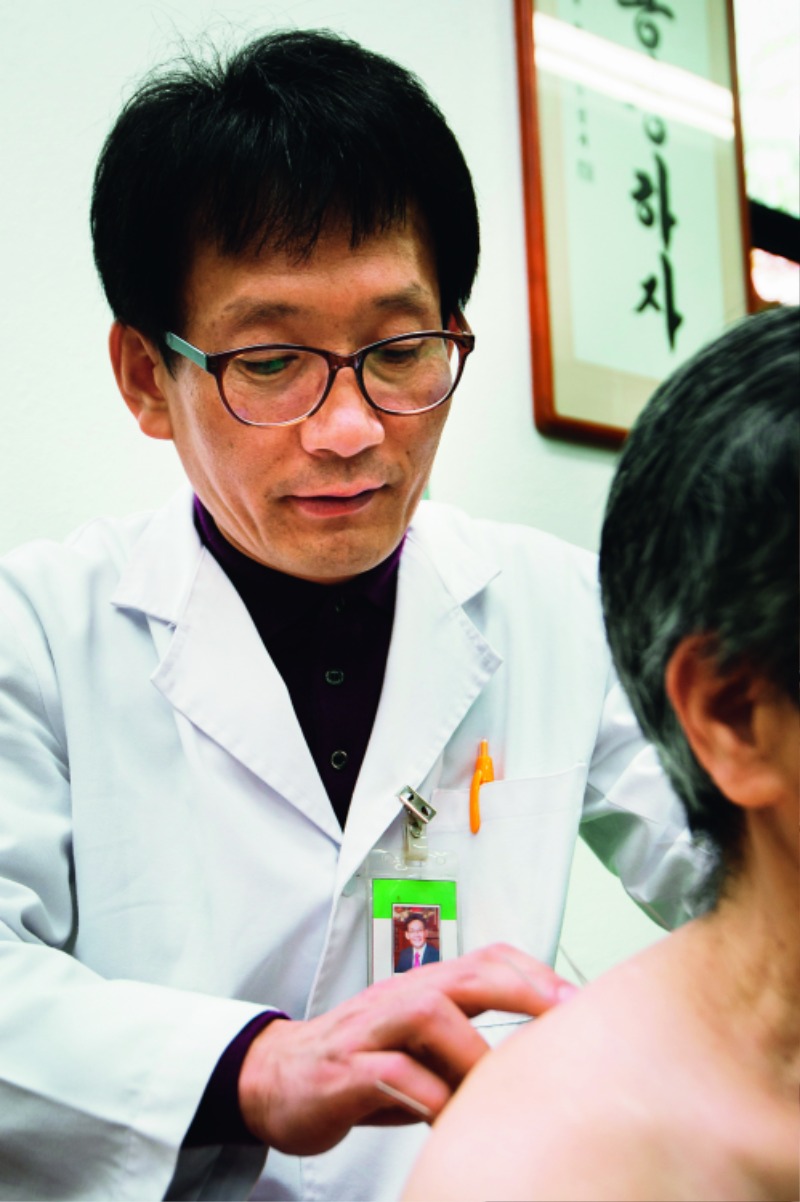
1. Seok provides volunteer medical care on a weekly basis. He regards it as payback to the people in South Korea who helped him resettle and become the only person with medical licenses from both the North and the South.
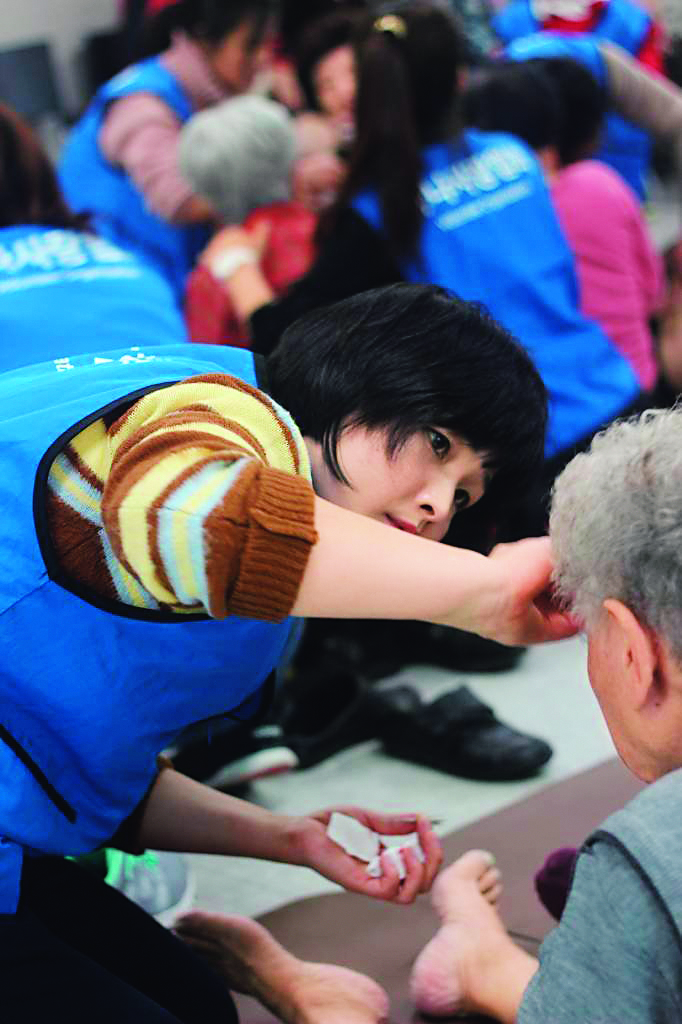
1. Seok provides volunteer medical care on a weekly basis. He regards it as payback to the people in South Korea who helped him resettle and become the only person with medical licenses from both the North and the South.
Starting Over
Studying far into the night, Seok struggled with South Korea’s traditional medical textbooks, which are full of difficult classical Chinese characters. He had only learned basic Chinese characters in the North. Three years after resettling in South Korea, he passed the licensing exam, becoming the first person to obtain such a qualification in both Koreas. He went on to earn a master’s degree in traditional medicine from Kyung Hee University in Seoul, and is now considering pursuing a PhD.
According to Seok, one major difference between the traditional medical practices of the two Koreas is found in acupuncture techniques. “In the South, doctors use thin and small needles to give patients less of a stinging sensation. But in the North, they use very thick needles,” he said. “People normally think thick needles will give them more of a stinging sensation, but it’s not true. Patients feel relaxed and refreshed after an acupuncture treatment with large needles. It’s one of the things that refugees miss most.”
His clinic is famous for a unique North Korean style of acupuncture techniques, with “super-size” and “fire” needles, and even gold needles that normally would be used only to treat senior officials in North Korea. The gold needles are 0.6mm in diameter, much larger than typical acupuncture needles, which are 0.12mm to 0.3mm in diameter.
Traditional Korean medicine is based on Dongeui Bogam (Exemplar of Korean Medicine), a text compiled in 1610 by Heo Jun (1539-1615), a Joseon-era royal physician. But the two Koreas have diverged in its application since their division.
Therapeutic medicine has flourished in the North, where doctors treat patients based on the four-constitution (sasang) medicine developed by Yi Je-ma (1837-1900), a medical scholar of the late Joseon period. Under this system, patients with chronic diseases receive traditional treatment aimed at boosting their vitality and creating an immune response to fight disease.
“I received many benefits from South Korean society in the process of settling here. It’s natural that I should return the kindness.”
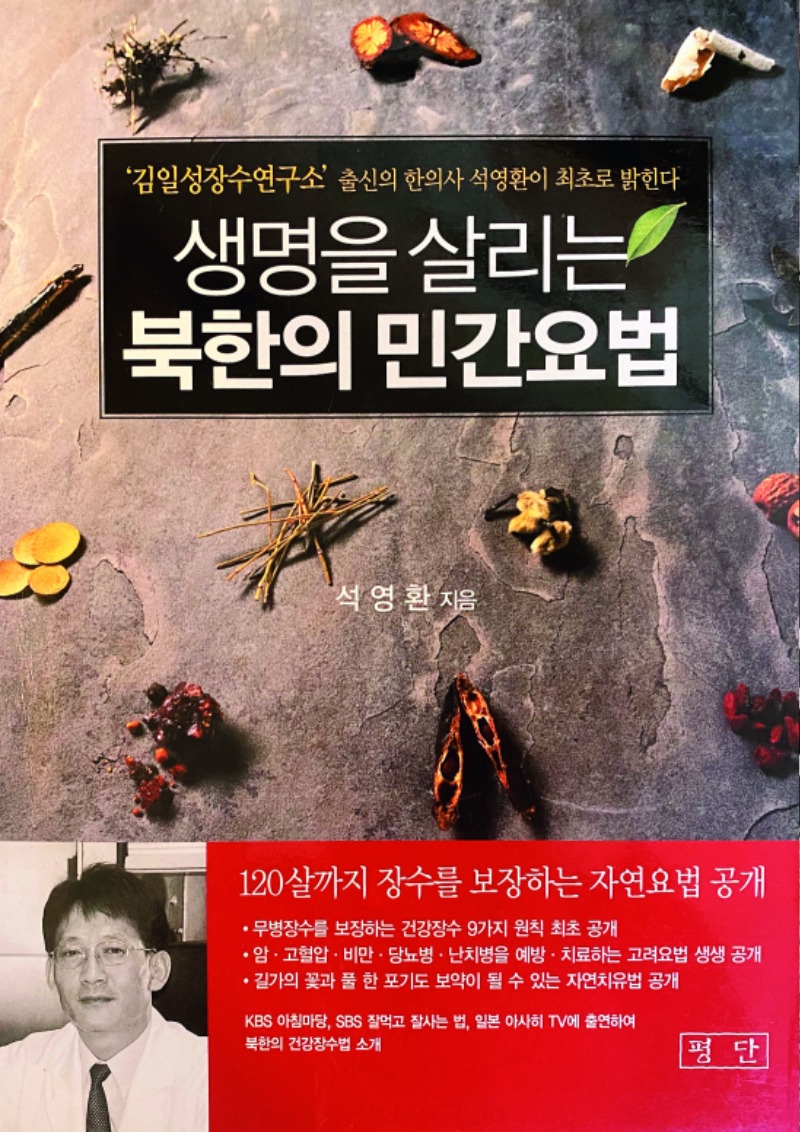
“Life-Saving Folk Medicine in North Korea,” a book on “Koryo medicine,” the North Korean version of traditional medicine, written by Seok.
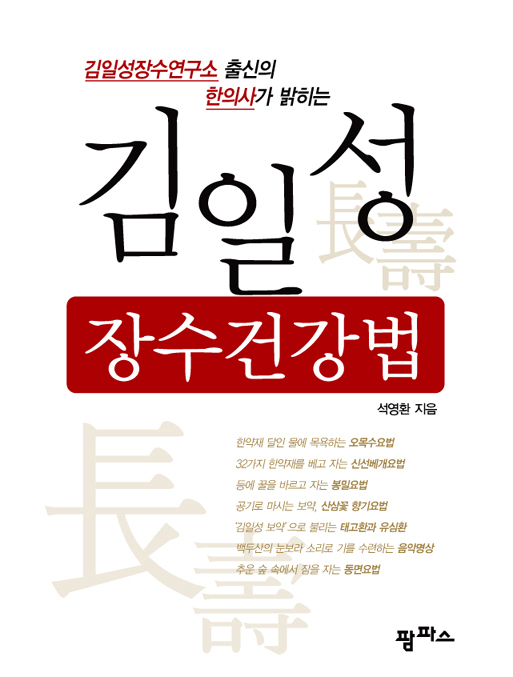
Seok is the author of several books that introduce the North Korean version of traditional medicine. One is “Kim Il-sung’s Ways to Stay Healthy and Live Longer.” It describes the natural therapy used by the late North Korean leader.
Pride in ‘Koryo Medicine’
Seok is very proud of Koryo medicine. He employs “Yusimhwan” and “Taegohwan,” traditional medicinal globules, making use of his experience as a cardiovascular and hematology specialist at the Research Center of Basic Medical Sciences back in Pyongyang. The two types of sphere-shaped medications are known to have been favorites of Kim Il-sung and his son, Jong-il, when they were alive. They are believed to be effective in treating stress disorders and preventing aging.
Medical study in the North consists of six years in the classroom and six months of clinical training. Students of Koryo medicine attend classes in both Eastern and Western medical theory and practice. North Korean doctors normally use both Eastern and Western tests to examine a patient, but treatment is mainly based on Eastern medicine, according to Seok.
The North also has an abundance of medicinal plants and a sound prescription service based on patients’ constitutional types, Seok explains. Patients’ own willpower to recover is most essential, and then followed by what medicines and treatment they receive from which doctor, he said.
Volunteer Healthcare
Seok has published four books so far: “Life-Saving Folk Medicine in North Korea” (2003), “Climbing Mountains, Digging Wild Ginseng” (2003), “Kim Il-sung’s Ways to Stay Healthy and Live Longer” (2004) and “Healthcare in North Korea” (2006).
He also provides volunteer medical care for elderly people, a service he began in 2004 with another traditional medical doctor from the North. “I received many benefits from South Korean society in the process of settling here. It’s natural that I should return the kindness. Volunteer work also makes me feel happier,” he said.
Seok has been leading a volunteer group, initially called the “Federation of North Korean Refugees in Medical Profession,” which was then expanded and renamed as the “Hana Nanum Foundation” (hana meaning “one” and nanum meaning “sharing”), since its founding in 2015. The number of volunteers and supporters participating in the group has increased as the number of North Korean refugees in the medical profession and their sympathizers has grown. At present, the group has about 130 volunteers, including some 30 traditional medical doctors and physiotherapists.